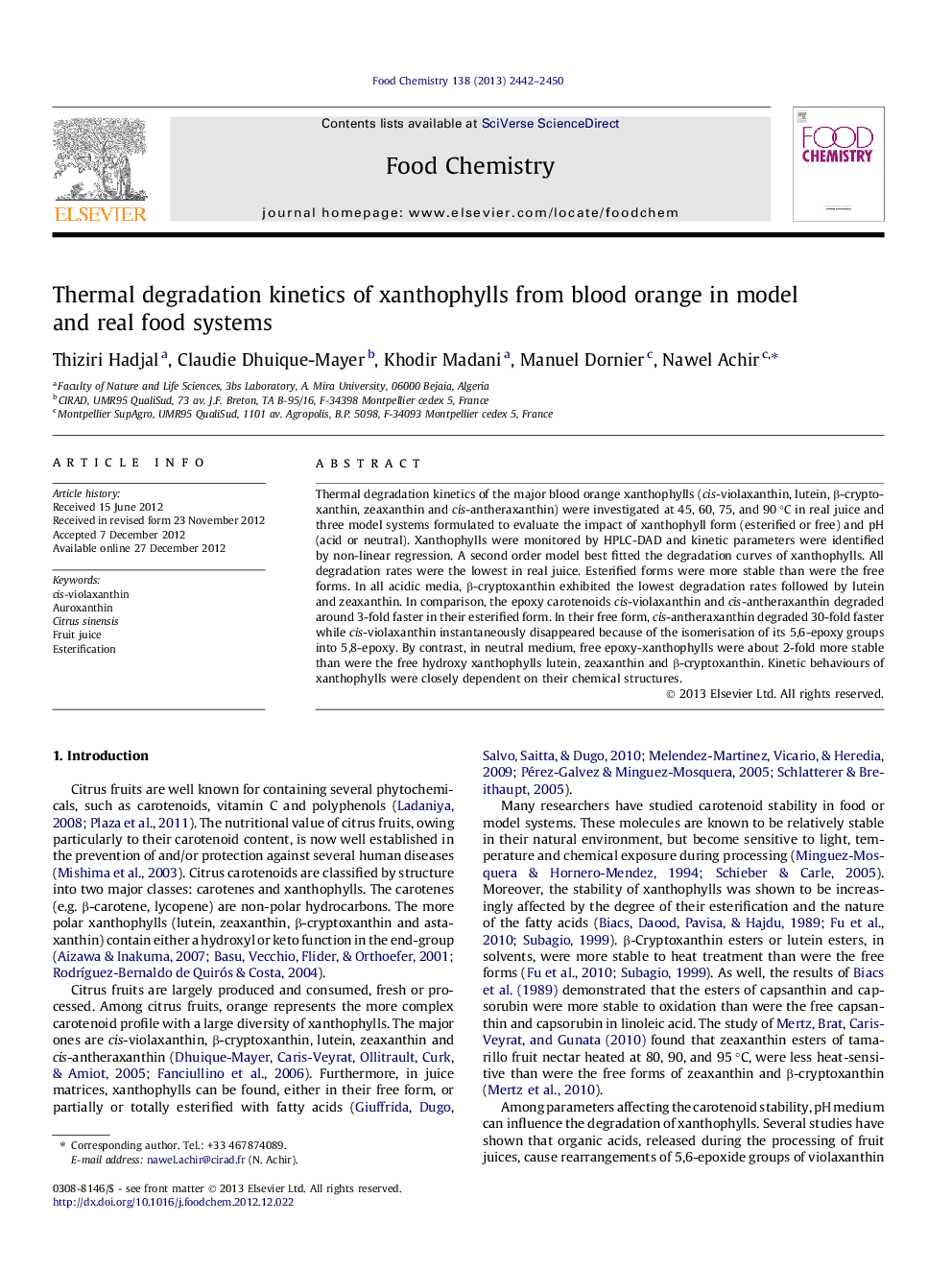| کد مقاله | کد نشریه | سال انتشار | مقاله انگلیسی | نسخه تمام متن |
|---|---|---|---|---|
| 1185527 | 963408 | 2013 | 9 صفحه PDF | دانلود رایگان |

Thermal degradation kinetics of the major blood orange xanthophylls (cis-violaxanthin, lutein, β-cryptoxanthin, zeaxanthin and cis-antheraxanthin) were investigated at 45, 60, 75, and 90 °C in real juice and three model systems formulated to evaluate the impact of xanthophyll form (esterified or free) and pH (acid or neutral). Xanthophylls were monitored by HPLC-DAD and kinetic parameters were identified by non-linear regression. A second order model best fitted the degradation curves of xanthophylls. All degradation rates were the lowest in real juice. Esterified forms were more stable than were the free forms. In all acidic media, β-cryptoxanthin exhibited the lowest degradation rates followed by lutein and zeaxanthin. In comparison, the epoxy carotenoids cis-violaxanthin and cis-antheraxanthin degraded around 3-fold faster in their esterified form. In their free form, cis-antheraxanthin degraded 30-fold faster while cis-violaxanthin instantaneously disappeared because of the isomerisation of its 5,6-epoxy groups into 5,8-epoxy. By contrast, in neutral medium, free epoxy-xanthophylls were about 2-fold more stable than were the free hydroxy xanthophylls lutein, zeaxanthin and β-cryptoxanthin. Kinetic behaviours of xanthophylls were closely dependent on their chemical structures.
► Degradation kinetics of blood orange xanthophylls studied in real juice and model systems.
► Effect of the xanthophyll form (free or esterified) and pH during heat treatments.
► Order, degradation rate constants and activation energies identified.
► Hydroxy xanthophylls are the most stable but are sensitive to a pH elevation.
► Epoxy xanthophylls are unstable in acidic condition especially in their free form.
Journal: Food Chemistry - Volume 138, Issue 4, 15 June 2013, Pages 2442–2450